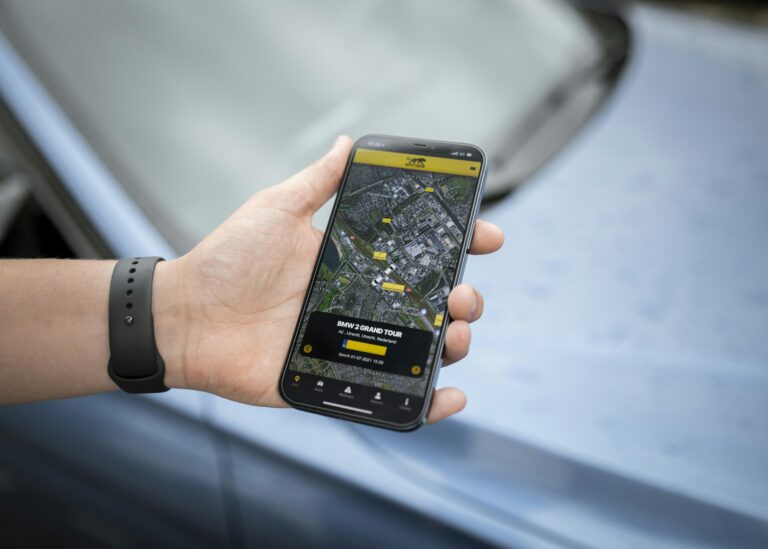In today’s fast-paced world, efficient navigation is indispensable for both daily commuters and long-distance travelers. The proliferation of mobile technology has transformed how drivers access real-time traffic information, enabling smarter route choices and reduced travel times. This article offers an analytical examination of the top navigation apps currently available, focusing specifically on their effectiveness in delivering real-time traffic updates. By evaluating the accuracy, timeliness, and user interface of each platform, we aim to provide a comprehensive overview that assists users in selecting the most reliable tools for navigating today’s dynamic road conditions.
Table of Contents
- Comparative Analysis of Real-Time Traffic Accuracy and Update Frequency
- User Interface and Ease of Navigation in High Traffic Scenarios
- Impact of Community-Sourced Data on Route Optimization
- Recommended Navigation Apps for Reliable Commuter Experience
- The Conclusion
Comparative Analysis of Real-Time Traffic Accuracy and Update Frequency
When assessing navigation apps for their effectiveness in delivering real-time traffic accuracy, it becomes evident that data sources and update mechanisms play pivotal roles. Applications leveraging multiple data streams-such as GPS signals from millions of devices, road sensor inputs, and user-generated reports-tend to provide superior precision. For example, apps that integrate crowd-sourced incident reports often pinpoint traffic jams or accidents faster, drastically reducing the margin of error in traffic predictions. Conversely, applications relying heavily on static data or delayed feeds may showcase inconsistencies, impacting route recalculations and estimated arrival times.
Update frequency directly influences how swiftly a navigation app reflects current road conditions. Higher refresh rates enhance responsiveness, but can sometimes increase battery consumption or data usage. Our comparative analysis highlights the following key factors that differentiate top performers:
- Real-Time Data Sampling: Frequency at which vehicular data and road events are collected.
- Push versus Pull Updates: Whether the app actively receives updates or queries traffic info on demand.
- Traffic Incident Detection Lag: Time elapsed between event occurrence and app notification delivery.
| App | Update Frequency | Traffic Accuracy (%) | Average Notification Lag (seconds) |
|---|---|---|---|
| NavigatorX | Every 20 sec | 92% | 15 |
| RouteMaster | Every 30 sec | 89% | 22 |
| DriveSense | Every 15 sec | 94% | 12 |
User Interface and Ease of Navigation in High Traffic Scenarios
When evaluating the top navigation apps under the pressure of high traffic conditions, the interface’s clarity and responsiveness become paramount. A clean, minimalistic design that prioritizes real-time data visualization allows drivers to grasp critical information instantly without distraction. Features such as high-contrast maps, intuitive iconography, and easily accessible alternate routes play crucial roles in enhancing usability. Additionally, apps that incorporate voice commands or auditory alerts help maintain driver focus, reducing the cognitive load during complex traffic scenarios.
Equally important is how these apps handle user interaction under stress. Seamless gesture controls, quick-load times for route recalculations, and proactive traffic event notifications contribute significantly to user satisfaction. Below is a comparative overview of key UI elements tailored for high traffic environments across leading navigation applications:
| Feature | App A | App B | App C |
|---|---|---|---|
| Real-Time Route Updates | Instant, auto-refresh | Manual refresh option | Delayed by 5 sec |
| Interface Customization | High (themes, fonts) | Moderate (font size) | Low (fixed layout) |
| Voice Command Accuracy | 95% | 88% | 90% |
| Alert Types |
|
|
|
Impact of Community-Sourced Data on Route Optimization
The integration of community-sourced data has revolutionized route optimization by providing a dynamic layer of real-time insights that traditional data sources often miss. Navigation apps that harness user-generated reports on traffic incidents, road closures, and speed traps create a feedback loop where drivers contribute actively to the accuracy of the information. This crowdsourced intelligence enables algorithms to calibrate routes with unprecedented precision, adjusting for micro-level disruptions that sensor networks or historical data cannot predict promptly.
Several key advantages stem from this approach:
- Enhanced responsiveness: Routes adapt instantly as users report new conditions, minimizing delays.
- Localized accuracy: Community inputs capture hyperlocal events, such as temporary construction, that satellite data alone may overlook.
- Improved predictive capabilities: Aggregated trends from user reports help forecast traffic patterns beyond relying on raw sensor feeds.
| Community Data Metric | Impact on Route Optimization |
|---|---|
| Accident Reports | Immediate rerouting to avoid congestion |
| Road Condition Alerts | Improved safety and efficient navigation |
| Speed Trap Notifications | Adjusted speeds to optimize travel time |
Recommended Navigation Apps for Reliable Commuter Experience
The Conclusion
In conclusion, the analysis of leading navigation apps reveals distinct strengths and limitations in their real-time traffic update capabilities. While some platforms excel in data accuracy and timely rerouting, others offer broader regional coverage or enhanced user interface features. For professionals relying on precise and dynamic traffic information, selecting the optimal app ultimately depends on specific needs such as geographic location, update frequency, and integration with other services. Continuous advancements in AI and data collection promise further improvements, making it essential for users to periodically reassess their navigation tools to maintain efficient and informed travel.

